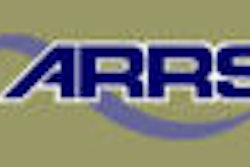Practically everything in healthcare today is undergoing rapid change, and the practice and business of radiology is no exception. At least four trends are causing imaging centers to consider how subspecialty expertise will shape businesses, operations, staffing, and marketing.
Trend one: Increased imaging complexity
The imaging-industry knowledge base has dramatically expanded with the advent of MRI, multidetector-row CT (MDCT), PET/CT, and the newly developing applications for these modalities.
Keeping up with the latest advances is becoming a challenge for radiologists. No one can be an expert in everything, so radiology subspecialists have evolved -- first as clinical experts (musculoskeletal [MSK], neuroradiology, nuclear medicine, and interventional), then as modality experts (MRI, CT, PET, and so forth), and later as experts in specialized clinical, modality, anatomy, and pathology areas.
The next step in the evolution of radiology is the "hypersubspecialist," who is beginning to emerge as subspecialty radiologists dedicate themselves to interpreting thousands of annual cases in a very narrow area, such as MSK MRI of the joints and extremities.
Trend two: Heightened demand for subspecialists
Radiologists aren't the only ones finding a demand for subspecialization due to the increasing complexity of the specialty. Referring physicians are feeling this need as well due to their own increasing subspecialization. For example, orthopedic surgeons now specialize in one particular anatomy, such as the knee. These physicians require complementary specialization in their radiology interpretations.
Heightened demand for subspecialization in radiology interpretation has driven physicians' requests for decisive, directive, definitive, detailed reports and consultations from radiologists who have a specialized understanding of clinical specialties, modalities, anatomies, pathologies, and surgical or medical options. Referring physicians expect radiologists to stay on top of the latest modality advancements, including MRI's capability to depict soft tissues, CT's unparalleled spatial resolution, and PET's functional capabilities. In addition, demand for these services will only increase, as PET, MRI, and CT usage are expected to grow annually through 2008.
Having radiologists who subspecialize makes it easier for ordering physicians to manage their patients and improve surgical and therapy outcomes. Radiologists now must be able to "speak the same language" and collaborate with specialists. As noted in a Franklin & Seidelmann Subspecialty Radiology study conducted in January 2006, 55% of orthopedic surgeons said they do their own interpretations. If radiologists do not adapt, then clinicians will continue to interpret their own studies because their needs are not met by radiologists.
Trend three: Subspecialty radiologist shortage
Currently, there are simply not enough subspecialists to meet the demand. The additional training required to be a subspecialist is a disincentive to entering the practice, and fewer residents are taking fellowships.
In addition, even radiologists who do subspecialize often join practices and then have to interpret all types of cases. These subspecialists may eventually lose their edge, either because of the lack of volume in their subspecialty to maintain their expertise or because peer collaboration is minimal.
Most traditional imaging facilities do not generate enough case volume in any given subspecialty area, such as MSK, neuroradiology, or body imaging, for a radiologist to build or maintain expertise. For example, a typical imaging facility on average generates approximately 1,200 to 4,000 total MSK cases per year, which are divided among all of its radiologists. However, I believe that true expertise is achieved when a radiologist has interpreted 10,000 to 15,000 cases in a dedicated subspecialty area and then interprets an annual case volume of 10,000 to 12,000 cases to maintain the achieved level of expertise. Additionally, maturation is achieved at 30,000 to 50,000 cases over the course of a career.
This shortage is a true problem for imaging facilities and hospitals, and is of particular concern for facilities that hope to increase volume in subspecialty clinical areas, including neurological MRI and abdominal CT. Radiology educators and modality vendors need to find better and more efficient ways to provide radiologists with the training they need to stay up to date on the latest modality and clinical application advancements.
Trend four: Subspecialty reports offer competitive advantage
Providing subspecialty expertise is now a key competitive differentiator for imaging facilities, resulting in high-quality reports, increased physician satisfaction, improved patient outcomes, and a marketing tool to increase referrals.
Imaging centers, hospitals, and in-office practices are highly competitive with one another, each seeking more referrals from existing and new physicians. And most imaging providers today offer many of the same modalities and the same patient-related services. An imaging facility no longer can differentiate itself merely by its modalities or technologies, but rather by coupling technology with detailed, high-quality subspecialty reports that support the clinician's information needs.
In addition to offering high-quality reports from subspecialists, imaging facilities can use subspecialty radiology to target the niche of referring physicians typically underserved by radiology, including spine surgeons, neurosurgeons, podiatrists, rheumatologists, oncologists, and specialty orthopedists. And subspecialty radiologists trained on the latest modality advancements can support an imaging facility's capability to purchase high-end modalities, such as 3-tesla MRI and MDCT, to generate new income.
Radiologists have been experiencing turf battles with cardiologists, orthopedists, and gastroenterologists who interpret their own radiology reports. If radiologists do not, or cannot, keep up with the expertise needed to develop accurate, decisive, and directive reports, then this trend will only increase.
Teleradiology turns these trends into opportunity
Fortunately, teleradiology has created opportunities for any imaging facility in any location -- rural, urban, or suburban -- to access subspecialty expertise and provide referring physicians subspecialty reports. Teleradiology systems enable images, information, and reports to be distributed quickly and securely between radiologists and imaging facilities. This creates the ideal environment for the hard-to-find subspecialist who can conveniently work from any location.
Teleradiology makes it possible for imaging facilities to offer referring physicians an optimal radiologist staffing strategy that matches the appropriate radiology expertise and availability with the procedure type, volume, and clinician-interpretation needs. An ideal model blends onsite radiology experts with virtual subspecialty experts and nighttime general coverage as needed.
Using this integrated staffing approach is an efficient and cost-effective way to provide high-quality reports and consultations from subspecialty experts when an imaging facility does not generate enough subspecialty volume to merit hiring a full-time onsite subspecialist. It is also the ideal solution for facilities that have challenges finding local subspecialists or even for radiology groups that need complementary subspecialty staffing support.
The technology that has made teleradiology possible offers imaging facilities a huge competitive advantage that they must seize to thrive. The four trends discussed in this paper can be seen as challenges -- or as opportunities to improve healthcare. By using the integrated staffing approach described above, facilities can provide high-quality reports that increase referring physician satisfaction, which increases referrals -- and therefore revenue. By tapping into a subspecialty virtual network based on demand, an imaging facility or radiology group can optimize their staffing model and costs. In addition, the focus on subspecialty radiology expertise will improve patient outcomes and mitigate malpractice exposure.
By Dr. Peter Franklin
AuntMinnie.com contributing writer
October 5, 2006
Dr. Peter Franklin is the co-founder and medical director of Franklin & Seidelmann Subspecialty Radiology, a Beachwood, OH-based subspecialty radiology interpretation provider serving imaging centers, orthopedic practices, hospitals, and radiology groups throughout the U.S. He may be contacted via the firm's Web site, or via phone at 216-255-5700.
Related Reading
Medicare 2006 and beyond: What comes after 'critical'? July 25, 2006
Radiology is dead -- long live imaging! June 23, 2006
Survey says rads are considering teleradiology, May 3, 2006
Internet reliable enough to transmit digital screening mammography scans, November 29, 2005
New efforts urged to 'save' pediatric radiology, June 14, 2005
Copyright © 2006 Franklin & Seidelmann Subspecialty Radiology



















